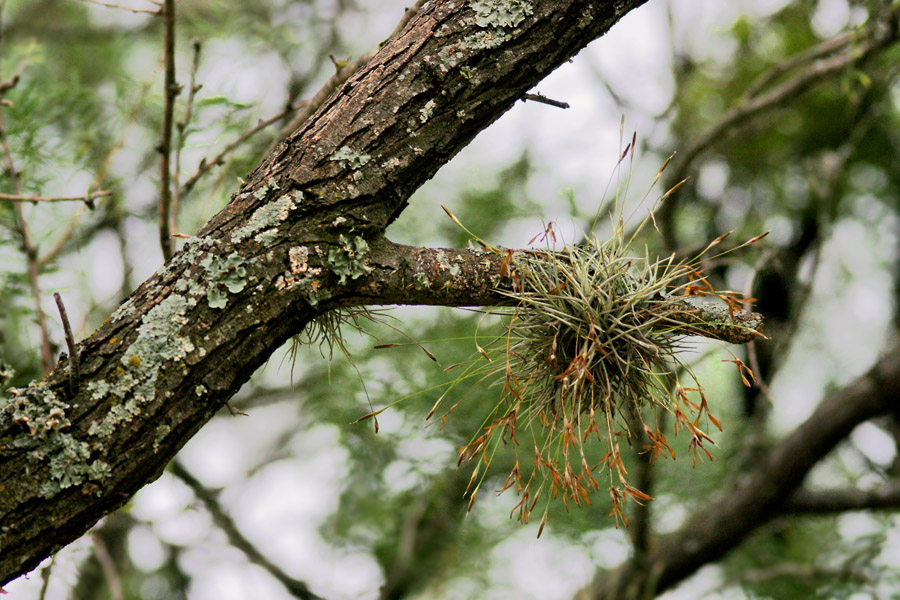Tillandsia
|
Family: Bromeliaceae |
Herbs, usually epiphytic, stemless to long caulescent. Leaves mostly many-ranked, rosulate, or occasionally 2-ranked and / or laxly arranged; blade linear to triangular or ligulate, margins entire, trichomes usually conspicuous. Inflorescences central, 1--many-flowered, 2-ranked; floral bracts mostly broad, conspicuous, rachis covered or exposed at anthesis. Flowers bisexual; sepals distinct or adaxial pair connate, usually symmetric; petals distinct; stamens included or exserted, filaments free; ovary superior. Capsules cylindric, dehiscent. Seeds with basal, white, plumose appendage. PLANT: epiphytic, herbaceous, and perennial. ROOTS: lacking or poorly developed. STEMS: short to elongate. LEAVES: rosulate or distichous, entire, linear to triangular or ligulate, conspicuously covered by trichomes. INFLORESCENCE: a distichous spike, sometimes reduced to a single polystichous spike or even singleflowered; floral bracts broad and conspicuous. FLOWERS: perfect; sepals symmetric, distinct or posterior pair united; petals free and glabrous; ovary superior and glabrous; ovules many. FRUITS: septicidal capsules. SEEDS: narrowly cylindric with basal, white, plumose appendage. NOTES: NOTES ca. 550 species; Neotropics. (Named after the Swedish botanist E. Tillands, 1640-1693.) REFERENCES: Raul Gutierrez Jr., 2007, Vascular Plants of Arizona: Bromeliaceae. CANOTIA 3 (2): 23-25. Lvs entire; pet separate; ovary superior; fr capsular; seeds plumose; epiphytes. 500, warm Amer. Gleason, Henry A. & Cronquist, Arthur J. 1991. Manual of vascular plants of northeastern United States and adjacent Canada. lxxv + 910 pp. ©The New York Botanical Garden. All rights reserved. Used by permission. |

